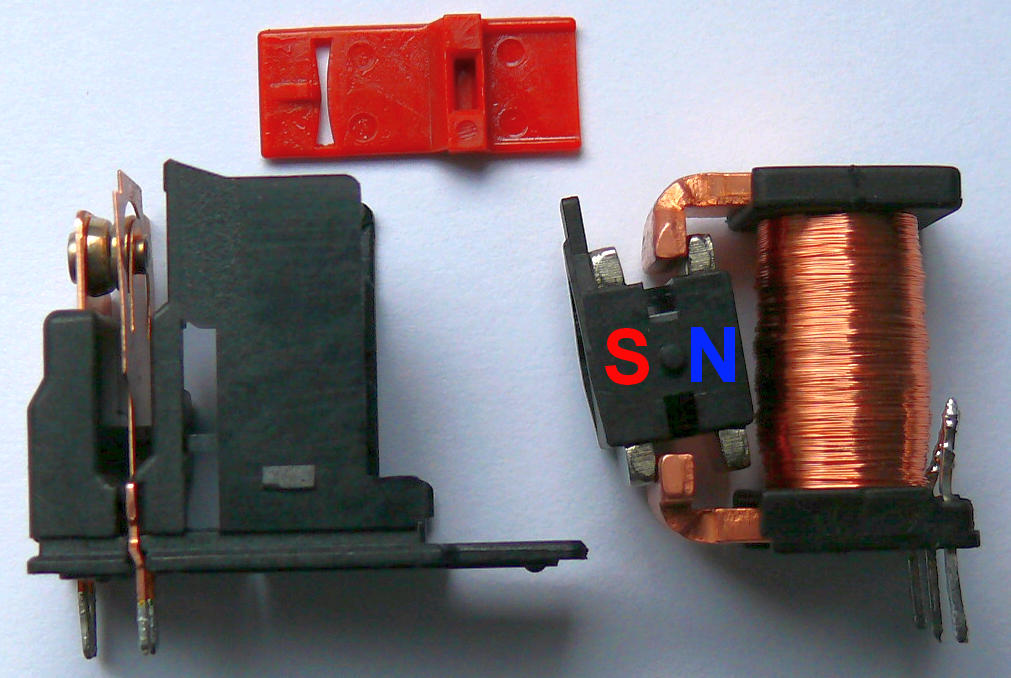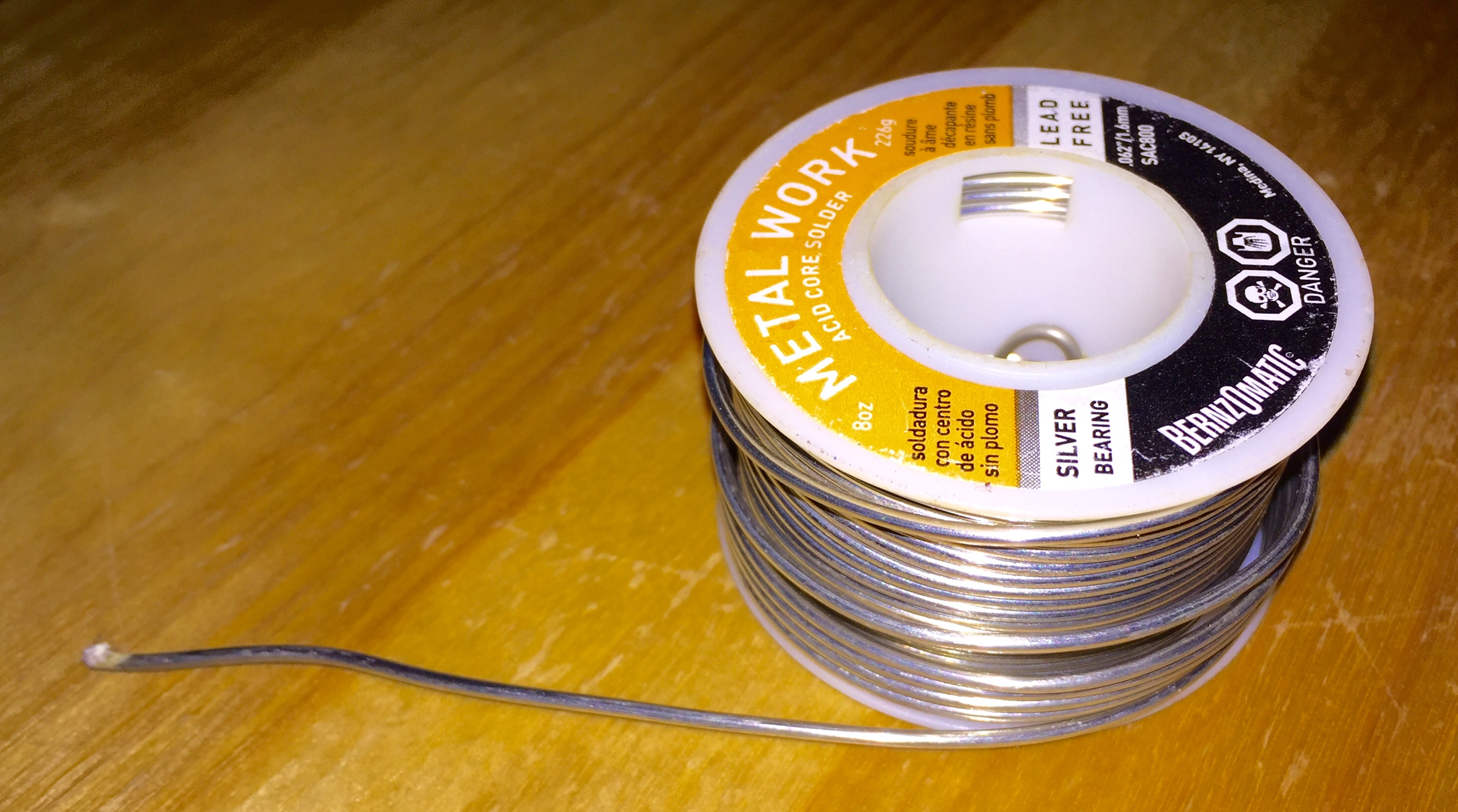|
Dry Contact
Dry contact may mean any of the following in electronics: * ''No current'': A dry contact is the synonym of volt free — it is not "wetted" by a voltage source. Dry contact can refer to a secondary set of contacts of a relay circuit which does not make or break the primary current being controlled by the relay. Usually some other contacts or devices have the job of starting or stopping the primary current being controlled. For example, a reed relay matrix switch is normally switched with all contacts dry. After the contacts are all connected, a wire spring relay is energized and connects a supervisory scan point, or main switch, through which the primary current being controlled then flows. Dry contacts are primarily employed in extra-low voltage (less than 50 V AC) distribution circuits. * ''No mercury'': The wet contact of a mercury-wetted relay gives certain operational advantages. Dry contacts means a relay that does not use mercury-wetted contacts. * ''Dry joint'': A dry ... [...More Info...] [...Related Items...] OR: [Wikipedia] [Google] [Baidu] |
Relay
A relay Electromechanical relay schematic showing a control coil, four pairs of normally open and one pair of normally closed contacts An automotive-style miniature relay with the dust cover taken off A relay is an electrically operated switch. It consists of a set of input terminals for a single or multiple control signals, and a set of operating contact terminals. The switch may have any number of contacts in multiple contact forms, such as make contacts, break contacts, or combinations thereof. Relays are used where it is necessary to control a circuit by an independent low-power signal, or where several circuits must be controlled by one signal. Relays were first used in long-distance telegraph circuits as signal repeaters: they refresh the signal coming in from one circuit by transmitting it on another circuit. Relays were used extensively in telephone exchanges and early computers to perform logical operations. The traditional form of a relay uses an electromagnet to c ... [...More Info...] [...Related Items...] OR: [Wikipedia] [Google] [Baidu] |
Reed Relay
A reed relay is a type of relay that uses an electromagnet to control one or more reed switches. The contacts are of magnetic material and the electromagnet acts directly on them without requiring an armature to move them. Sealed in a long, narrow glass tube, the contacts are protected from corrosion. The glass envelope may contain multiple reed switches or multiple reed switches can be inserted into a single bobbin and actuate simultaneously. Reed switches have been manufactured since the 1930s. Compared with armature-based relays, reed relays can switch much faster, as the moving parts are small and lightweight, although switch bounce is still present. Also, they require less operating power and have lower contact capacitance. Their current handling capacity is limited but, with appropriate contact materials, they are suitable for "dry" switching applications. They are mechanically simple, making for reliability and long life. Memory device A few million reed relays were used ... [...More Info...] [...Related Items...] OR: [Wikipedia] [Google] [Baidu] |
Wire Spring Relay
A wire spring relay is a type of relay, that has springs made from drawn wires of nickel silver, rather than cut from flat sheet metal as in the flat-spring relay. This class of relays provided manufacturing and operating advantages over previous designs. Wire spring relays entered mass production in the early 1950s. Wire spring relays were the most suitable relays for logic and computing functions. They were used extensively in markers, which were special purpose computers used to route calls in crossbar switch central offices. Wire spring relays were primarily manufactured by the Western Electric Company for use in electromechanical telephone exchanges in the Bell System. The design was licensed for use around the world, and was commonplace in Japan. Manufacturing of wire spring relays greatly declined in the late 20th century due to the introduction of digital electronic switching systems that used them in very small numbers. Description A relay has two major parts, t ... [...More Info...] [...Related Items...] OR: [Wikipedia] [Google] [Baidu] |
Extra-low Voltage
Extra-low voltage (ELV) is an electricity supply voltage and is a part of the Low voltage bandIEC 61140:2016 Chapter 4.2 in a range which carries a low risk of dangerous electrical shock. There are various standards that define extra-low voltage. The International Electrotechnical Commission (IEC) and the UK IET (BS 7671:2008) define an ELV device or circuit as one in which the electrical potential between two conductors or between an electrical conductor and earth (ground) does not exceed 50V AC or 120V DC (ripple free). The IEC and IET go on to define actual types of extra-low voltage systems, for example separated extra-low voltage (SELV), protected extra-low voltage (PELV), functional extra-low voltage (FELV). These can be supplied using sources including motor / fossil fuel generator sets, transformers, switched PSU's or rechargeable battery. SELV, PELV, FELV, are distinguished by various safety properties, supply characteristics and design voltages. Some types of landscape ... [...More Info...] [...Related Items...] OR: [Wikipedia] [Google] [Baidu] |
Mercury-wetted Relay
A relay Electromechanical relay schematic showing a control coil, four pairs of normally open and one pair of normally closed contacts An automotive-style miniature relay with the dust cover taken off A relay is an electrically operated switch. It consists of a set of input terminals for a single or multiple control signals, and a set of operating contact terminals. The switch may have any number of contacts in multiple contact forms, such as make contacts, break contacts, or combinations thereof. Relays are used where it is necessary to control a circuit by an independent low-power signal, or where several circuits must be controlled by one signal. Relays were first used in long-distance telegraph circuits as signal repeaters: they refresh the signal coming in from one circuit by transmitting it on another circuit. Relays were used extensively in telephone exchanges and early computers to perform logical operations. The traditional form of a relay uses an electromagnet to c ... [...More Info...] [...Related Items...] OR: [Wikipedia] [Google] [Baidu] |
Soldering
Soldering (; ) is a process in which two or more items are joined by melting and putting a filler metal (solder) into the joint, the filler metal having a lower melting point than the adjoining metal. Unlike welding, soldering does not involve melting the work pieces. In brazing, the work piece metal also does not melt, but the filler metal is one that melts at a higher temperature than in soldering. In the past, nearly all solders contained lead, but environmental and health concerns have increasingly dictated use of lead-free alloys for electronics and plumbing purposes. Origins There is evidence that soldering was employed as early as 5,000 years ago in Mesopotamia. Soldering and brazing are thought to have originated very early in the history of metal-working, probably before 4000 BC. Sumerian swords from were assembled using hard soldering. Soldering was historically used to make jewelry, cookware and cooking tools, assembling stained glass, as well as other uses. ... [...More Info...] [...Related Items...] OR: [Wikipedia] [Google] [Baidu] |
Soldering
Soldering (; ) is a process in which two or more items are joined by melting and putting a filler metal (solder) into the joint, the filler metal having a lower melting point than the adjoining metal. Unlike welding, soldering does not involve melting the work pieces. In brazing, the work piece metal also does not melt, but the filler metal is one that melts at a higher temperature than in soldering. In the past, nearly all solders contained lead, but environmental and health concerns have increasingly dictated use of lead-free alloys for electronics and plumbing purposes. Origins There is evidence that soldering was employed as early as 5,000 years ago in Mesopotamia. Soldering and brazing are thought to have originated very early in the history of metal-working, probably before 4000 BC. Sumerian swords from were assembled using hard soldering. Soldering was historically used to make jewelry, cookware and cooking tools, assembling stained glass, as well as other uses. ... [...More Info...] [...Related Items...] OR: [Wikipedia] [Google] [Baidu] |
Solder
Solder (; NA: ) is a fusible metal alloy used to create a permanent bond between metal workpieces. Solder is melted in order to wet the parts of the joint, where it adheres to and connects the pieces after cooling. Metals or alloys suitable for use as solder should have a lower melting point than the pieces to be joined. The solder should also be resistant to oxidative and corrosive effects that would degrade the joint over time. Solder used in making electrical connections also needs to have favorable electrical characteristics. Soft solder typically has a melting point range of , and is commonly used in electronics, plumbing, and sheet metal work. Alloys that melt between are the most commonly used. Soldering performed using alloys with a melting point above is called "hard soldering", "silver soldering", or brazing. In specific proportions, some alloys are eutectic — that is, the alloy's melting point is the lowest possible for a mixture of those components, and co ... [...More Info...] [...Related Items...] OR: [Wikipedia] [Google] [Baidu] |
Cold Contact (other)
{{disamb ...
Cold contact may refer to: * Cold contact (marketing), a sales strategy also known as cold calling * Cold contact (switch), a particular switch or relay contact * Cold contact (soldering), a cold soldering joint See also * Cold junction (other) *Cold fusion (other) * Cold joint *Dry contact Dry contact may mean any of the following in electronics: * ''No current'': A dry contact is the synonym of volt free — it is not "wetted" by a voltage source. Dry contact can refer to a secondary set of contacts of a relay circuit which does n ... [...More Info...] [...Related Items...] OR: [Wikipedia] [Google] [Baidu] |



